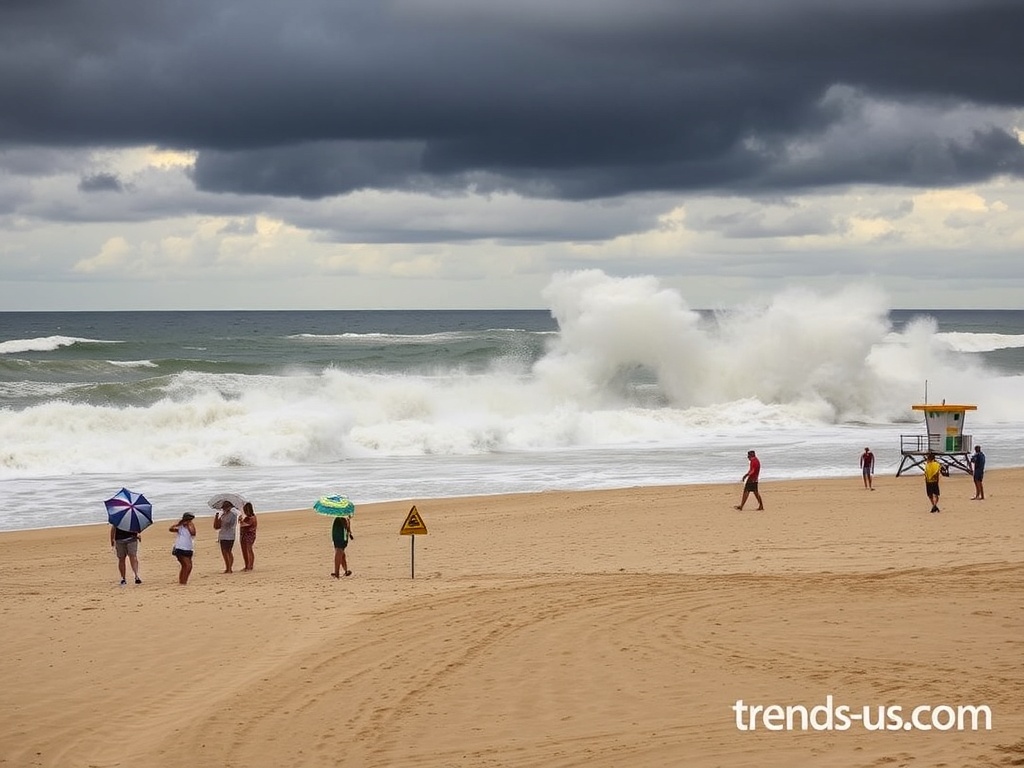Understanding Rip Tide Warnings: What Monmouth County Residents Need to Know
As the summer months approach and beachgoers flock to the beautiful shores of Monmouth County, it is crucial for residents and visitors alike to understand the significance of rip tide warnings. These natural phenomena can pose serious risks, making awareness and education vital for ensuring safety at our local beaches.
What is a Rip Tide?
A rip tide, often mistakenly referred to as a “rip current,” is a powerful channel of water that flows away from the shore. It occurs when waves break over sandbars or other underwater structures, creating currents that pull water back into deeper areas of the ocean. Understanding how these currents form can help beachgoers recognize their potential dangers.
The Dangers of Rip Tides
Rip tides are particularly hazardous because they can quickly sweep unsuspecting swimmers out to sea. The force of these currents can be strong enough to overpower even experienced swimmers. Recognizing rip tide conditions is essential for staying safe in the water.
According to experts, approximately 100 fatalities occur each year due to drowning in rip tides across U.S. beaches. Therefore, being informed about warning signs and safety measures is critical for all who enjoy Monmouth County’s coastline.
Identifying Rip Tide Conditions
Monmouth County regularly monitors ocean conditions and provides valuable information regarding rip tides through various channels:
1. **Beach Flags**: Pay attention to flag systems at local beaches; red flags typically indicate dangerous conditions.
2. **Signs**: Look out for informational signs posted along beach entrances detailing current surf conditions.
3. **Local Reports**: Stay updated with weather forecasts or surf reports that discuss potential hazards like strong currents or high surf days.
It’s important not just to rely on visual cues but also stay informed through trusted sources such as lifeguards or local news outlets.
Safety Measures During High-Risk Days
When faced with high-risk days where rip tides are prevalent, consider following these safety tips:
– **Swim Near Lifeguards**: Always swim in designated areas supervised by lifeguards who are trained in identifying dangerous conditions.
– **Avoid Swimming Alone**: If you must go into the water during potentially risky times, ensure you’re accompanied by others who can assist if needed.
– **Know How To Escape A Rip Tide**: If caught in a rip tide:
– Don’t panic; conserve your energy.
– Swim parallel to the shore until you feel the current weaken before heading back toward land.
– Signal for help if necessary by raising one arm above your head while treading water.
The Role of Local Authorities
Local authorities play an integral role in keeping Monmouth County’s beaches safe from hazards associated with rip tides. Beach patrols monitor oceanic conditions daily and provide timely updates about changing circumstances throughout peak hours when many families visit coastal areas.
Furthermore, educational programs aimed at teaching children and adults about ocean safety contribute significantly towards reducing incidents related directly caused by misinformed swimming practices—empowering everyone with knowledge ensures safer experiences along our coastlines!
Conclusion
As we embrace another summer season filled with sun-soaked days on Monmouth County’s picturesque beaches—staying vigilant against unexpected dangers such as rip tides should remain top-of-mind! By understanding what constitutes this phenomenon alongside taking precautionary measures outlined here will enable residents & visitors alike not only enjoy themselves but do so safely! Remember—the ocean may beckon enticingly—but respecting its power helps preserve both lives & memories made under those sunny skies!



